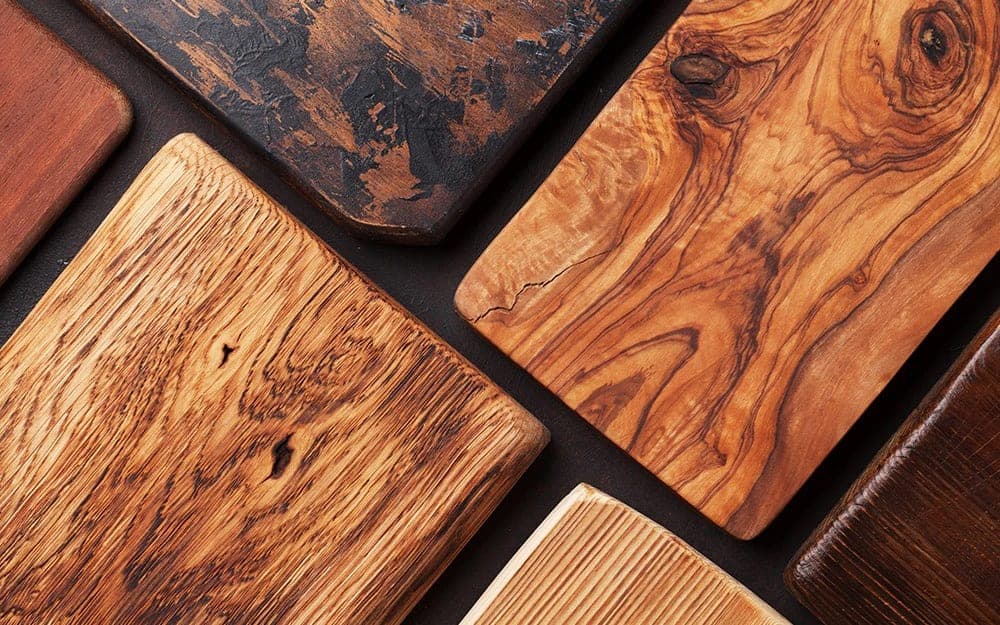
The Best Types of Wood for Cutting Boards to Sell
Cutting boards are an essential kitchen tool, used for everything from chopping vegetables to carving roasts. Choosing the right type of wood for your cutting board is crucial, as it will impact its durability, longevity, and performance. While many wood species are suitable for crafting cutting boards, some stand out as the best choices for both functionality and aesthetic appeal.
When selecting wood for cutting boards, consider factors such as hardness, grain pattern, resistance to moisture, odor absorption, and cost. Understanding these properties will help you choose the right wood for your needs and target market.
Hardwoods for Cutting Boards
Hardwoods are generally denser and more resistant to wear and tear than softwoods. This makes them ideal for cutting boards that will see heavy use. Here are some of the best hardwood options:
Maple
Maple is a popular choice for cutting boards due to its hardness, beautiful grain pattern, and resistance to moisture. Its tight grain structure makes it relatively resistant to scratches and dents. Maple is also a good choice for those seeking a light-colored board with a natural finish.
Cherry
Cherry wood offers a rich, reddish-brown hue that adds elegance to any kitchen. It is hard and durable, making it suitable for both everyday use and high-end cutting boards. Over time, cherry wood develops a warm, honey-like patina, enhancing its beauty.
Walnut
Walnut is a highly sought-after wood for cutting boards, known for its striking grain patterns and rich, dark brown color. It is hard and durable, offering excellent resistance to wear and tear. Walnut boards often feature dramatic figure, making them a stunning centerpiece in any kitchen.
Hardwood Alternatives
While traditional hardwoods are excellent for cutting boards, some alternative wood species offer unique characteristics and price points. Here are a few noteworthy options:
Bamboo
Bamboo is a rapidly renewable resource with excellent hardness and durability. It is also naturally antimicrobial, making it a safe choice for food preparation. Bamboo boards are often lighter and more affordable than traditional hardwoods, making them a popular choice for budget-conscious consumers.
Acacia
Acacia is a dense and durable hardwood with a distinctive golden-brown color and striking grain patterns. Its natural oil content provides a degree of water resistance, making it suitable for cutting boards. Acacia is a relatively affordable option compared to other hardwoods, making it a good choice for both functional and visually appealing boards.
Softwoods for Cutting Boards
Softwoods are generally less dense and more prone to scratches and dents than hardwoods. However, some softwood species offer unique advantages and can be used for cutting boards.
Pine
Pine is a soft and lightweight wood with a distinctive yellow-brown color. It is affordable and readily available, making it suitable for simple cutting boards. Pine boards are generally not recommended for heavy-duty use, as they can easily scratch and dent. However, they can be a good choice for decorative or serving boards.
Cedar
Cedar is known for its pleasant aroma and natural insect-repellent properties. It is a soft wood and should not be used for heavy-duty cutting. However, cedar boards can be used for serving boards or for storing items such as cheeses or breads. Their aroma can enhance the flavor of certain foods.
Factors to Consider When Choosing Wood for Cutting Boards
Beyond the basic properties of hardness and appearance, several other factors influence the suitability of wood for cutting boards. Here are some important considerations:
Moisture Resistance
Cutting boards are exposed to moisture during use, so choosing a wood with natural resistance to water damage is essential. Woods like maple and walnut are known for their low water absorption. However, even the most water-resistant woods should be treated with oil or wax to enhance their protection.
Odor Absorption
Certain woods, like cedar, have a natural ability to absorb odors. This can be desirable for food storage but is undesirable for cutting boards used to prepare different foods. Choose woods with low odor absorption, such as maple or cherry, to prevent cross-contamination of flavors.
Grain Pattern
The grain pattern of wood can affect both its appearance and its durability. Tight-grained woods, such as maple, are more resistant to scratches and dents. Wide-grained woods, such as walnut, can be more prone to damage, but their distinctive patterns are highly sought after. Consider the intended use and aesthetic appeal when selecting a wood based on its grain pattern.
Wood Finishing for Cutting Boards
Once you've chosen the right wood for your cutting boards, applying a suitable finish is crucial for protection and longevity. Common finishing techniques include:
Mineral Oil
Mineral oil is a popular choice for finishing cutting boards because it is food-safe and helps prevent water absorption. It also creates a smooth, water-resistant surface. Apply mineral oil regularly to maintain its protective barrier.
Beeswax
Beeswax adds a natural protective layer to cutting boards, enhancing their water resistance and providing a subtle shine. It also helps repel stains. Beeswax is often combined with mineral oil for a more robust finish.
Food-Grade Finishes
Several commercially available food-grade finishes are designed specifically for cutting boards. These finishes often combine mineral oil with other protective ingredients like tung oil or polymer resins. Choose a food-grade finish that meets your needs and preferences.
Conclusion
Choosing the right wood for your cutting boards is an important step in creating durable, functional, and aesthetically pleasing products. By considering factors such as hardness, grain pattern, moisture resistance, odor absorption, and cost, you can select the ideal wood for your target market and needs. Whether you're crafting maple boards for everyday use or walnut boards for high-end customers, choosing the right wood and applying a suitable finish will ensure your cutting boards meet the highest standards of quality and performance.
No comments:
Post a Comment
Note: Only a member of this blog may post a comment.